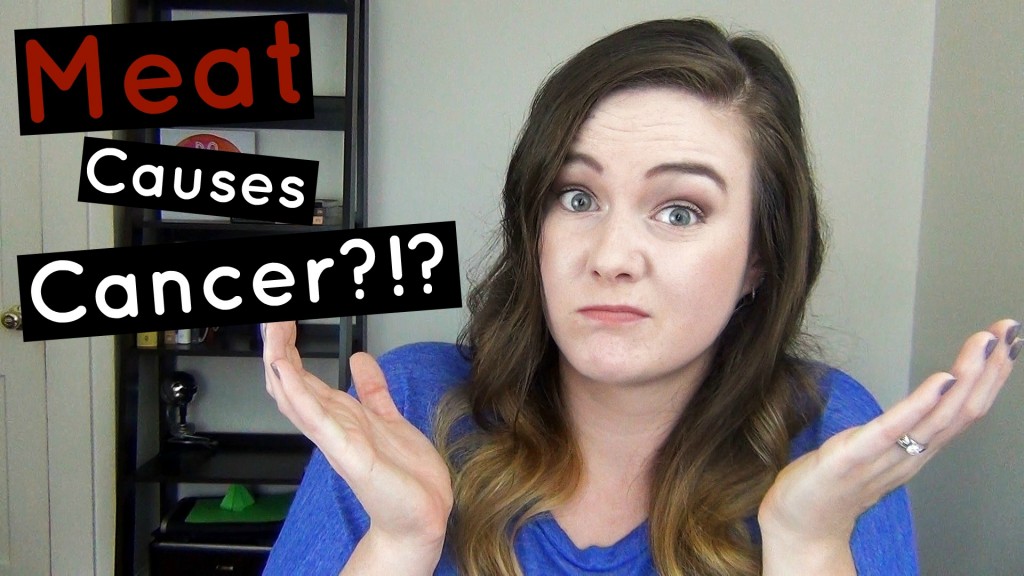Are You Being Tricked? Deceptive Meat Marketing
/[youtube=http://youtu.be/YPmrOZ8TikQ]
Like this video? Have any video or blog post requests? Let me know in the comments below!
Taking Another Look at Laboratory Beef
/Since my last post on this issue, lab grown meat has moved from the laboratory to the plate for its first public tasting. While it's still going to be a while before we have to worry about this technology in the general food supply, it's important to look at the facts on this issue and examine whether or not this is a viable option. I'm sure it isn't difficult for you to guess where I stand on this. Beyond the ick factor, the arguments used to support this technology, while they sound noble at first, crumble upon closer inspection. It's time to take this thing point by point and discuss what the real and current solutions are. And, believe it or not, none of them require lab experiments.
We simply don't have enough food to feed the world. With a growing population and so many going hungry, this type of meat is the answer to ending world hunger.
This feed the world argument gets thrown around all the time when discussing any controversial food technology. However, hunger is largely an issue of food waste, distribution, and having the means to acquire it. Creating more food doesn't solve these intrinsic problems. While there are many people in the world who go hungry, there are even more who are overweight or obese. The extra food we already have isn't getting to the people who need it. Focusing on local food systems and strengthening food economies can help in this area. Also, ensuring that excess foods from restaurants and catering can be donated to those in need keeps a lot of edible food out of the landfill. As an individual, planning meals and shopping with a list can reduce the purchase of extra food that we simply can't eat. Lastly, saving excess food by freezing, drying, or canning can decrease waste as well. That leftover soup could make a quick dinner in a pinch a couple months down the road if you freeze it before it goes bad. Have extra basil lying around? Make some pesto and freeze it for later!
Feeding cows requires pounds of grain that could be used to feed people directly, rather than going towards meat production.
This argument assumes that we continue with the unnatural and dangerous practice of feeding cattle with grain, rather than the grass they are meant to eat. Cows are part of a group of animals called ruminants who have the ability to transform grass, which is inedible for humans, into a viable food source in the form of meat. They need no grain to survive and the inclusion of grain is actually harmful to them. Cows shouldn't take away food from humans. They should be creating food from something we cannot eat. Getting more cows out on pasture and out the feed lot eliminates this problem and is a method that is well established and working for many farmers. No research required, just getting the education out to the farms.
Cows harm the environment. Between the fossil fuels that go into their production and run-off from feed lots they are a large contributor to the pollution of our planet.
Again, an argument that hinges upon the continuation of the industrial feed lot system for raising cattle. Industrial meat production requires so much fossil fuel because the cows are eating corn which is sprayed with petrochemical pesticides and shipped from hundreds of miles away. Then the meat is shipped to the consumer from centralized slaughter and packing facilities. The run-off mentioned above comes from cows in CAFOs (concentrated animal feeding operations) where they live in a combination of mud and their own excrement with no grass to be found to absorb their free fertilizer. When cows are raised on pasture, they eat the grass under their feet and their waste goes back into the earth to fertilize future grassy meals. Also, grass sequesters carbon like no other. According to Joel Salatin, everyone trying to save trees should stop and switch to grass. As the cows cut the grass with their teeth, new grass grows. This life and death cycle, when the grass is managed properly, helps build the soil and increases the grass's capacity to pull more carbon out of the atmosphere. Cows are meant to save the environment, not destroy it.
Would you eat laboratory meat? Let me know in the comments below!
NNMC Picking Protein: Be a Picky Eater
/ The quality of the food you eat can make a huge difference in your health. This is especially true when it comes to animal products. The methods used to produce dairy products and meat are far from being natural processes and this trickles down to us when we ingest these foods. For example, conventional beef is raised in crowded feet lots where they are fed corn, rather than the grass they are designed to eat. This causes changes in the environment of their digestive tract which allows for the growth of potentially harmful microorganisms, such as E. coli, which would normally not be present. Also, the fatty acid content of the meat is much different from its grass-fed counterparts. In addition, these animals are pumped with antibiotics to fight off diseases that wouldn't be a major concern if the animals weren't raised in such deplorable conditions. The antibiotics also serve a second purpose of boosting growth. It's unknown how this works, but it's effective, so we do it anyway. Then some growth hormones are thrown in for good measure. This is why it is so important to be a picky eater when it comes to your meat and dairy. Choose organic in the grocery store and go the extra mile to seek out local producers who you can talk to directly. They will often use practices that go even farther than the federal organic standards and you'll also be supporting your neighbors and local economy while forging new relationships that help build your community. To find a local producer in your area and start a conversation about the way they raise their food, go to eatwild.com or visit your local farmers market.
The quality of the food you eat can make a huge difference in your health. This is especially true when it comes to animal products. The methods used to produce dairy products and meat are far from being natural processes and this trickles down to us when we ingest these foods. For example, conventional beef is raised in crowded feet lots where they are fed corn, rather than the grass they are designed to eat. This causes changes in the environment of their digestive tract which allows for the growth of potentially harmful microorganisms, such as E. coli, which would normally not be present. Also, the fatty acid content of the meat is much different from its grass-fed counterparts. In addition, these animals are pumped with antibiotics to fight off diseases that wouldn't be a major concern if the animals weren't raised in such deplorable conditions. The antibiotics also serve a second purpose of boosting growth. It's unknown how this works, but it's effective, so we do it anyway. Then some growth hormones are thrown in for good measure. This is why it is so important to be a picky eater when it comes to your meat and dairy. Choose organic in the grocery store and go the extra mile to seek out local producers who you can talk to directly. They will often use practices that go even farther than the federal organic standards and you'll also be supporting your neighbors and local economy while forging new relationships that help build your community. To find a local producer in your area and start a conversation about the way they raise their food, go to eatwild.com or visit your local farmers market.


